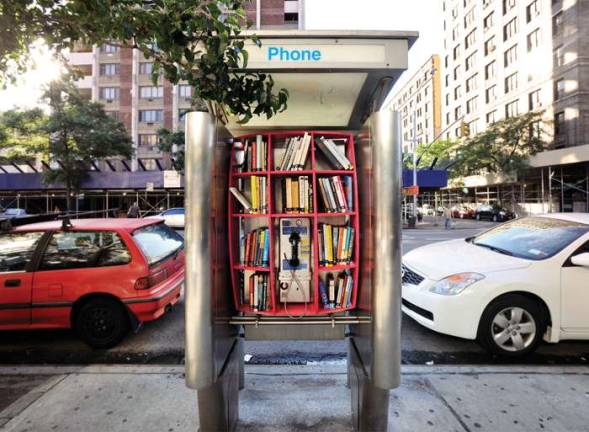Reimagining Phone Booths

In 1999, New York City and its Department of Information Technology and Telecommunications (DoITT) decided to invest heavily in an important element of the bustling city's infrastructure-pay phones. Since then, of course, the use of pay phones has decreased as rapidly and dramatically as Apple churns out new iPhones, and the 13,000 pay phone lining the streets of New York City sit awaiting an unknown fate when the franchise contracts to operate them expire in October 2014.[ ] To prepare for that date and hopefully make strides toward new uses for the obsolescent technology, the DoITT has put out a call to community boards and residents, asking for suggestions on what to do with the phones and the booths that hold them. While the city continues to collect suggestions, specifically on how some of the pay phones can be turned into alternative communication centers like wi-fi hotspots, interactive maps, cellphone charging stations or other types of electronic information centers, one Manhattan resident has taken the initiative to reimagine phone booth use himself. John H. Locke, an architectural designer, began asking himself about the potential functions of the existing, rarely utilized booths. "I saw them as a detriment to the space of the street in that their original useful function, to place phone calls, had been superseded by a less useful function, to serve as supports for pedestrian level billboards," Locke said. (The city receives 36 percent of ad revenue from phone booths and is hoping to get 50 percent in the new contracts.) "That initial question led me to search for something that could be more beneficial to the great neighborhood I live in." He came up with the idea to construct and install mini-libraries, built with wood that could be fitted into phone booths. Locke has installed several of the lending shelves, stocked with books, in some uptown booths, where they last from one to six weeks before they get dismantled, he said. While he admits that keeping up the small-scale libraries wouldn't necessarily be viable long-term, Locke has thought a lot about how the city could repurpose the spaces, and he emphasized the need to think outside of the box, literally and figuratively. "I think there are opportunities that these structures can temporarily become fun, idiosyncratic installations without requiring a strict function," Locke said. "For example, an artist in England turned an iconic red telephone booth into a fish aquarium." He also suggested that the city look at different solutions for different neighborhoods. "I think the opportunities for what the booth could provide in a more tourist-friendly location like the Bryant Park area might warrant something more like an interactive map, but that doesn't really make a lot of sense for all the booths north of 96th Street," Locke said. "Or in a heavily wired location, maybe the booth wants to send a financial alert message to your smartphone or alert you to a new restaurant." Most residents agree that many pay phones can be eliminated or reimagined, but there is still a limited need for old-fashioned landline pay phones in the city. According to the DoITT, there were over 27 million calls made on pay phones in 2011 (an average of six calls per phone per day), not including calls to 911. During a one-week period in December 2011, there were 8,264 calls made to 911 from sidewalk pay phones.